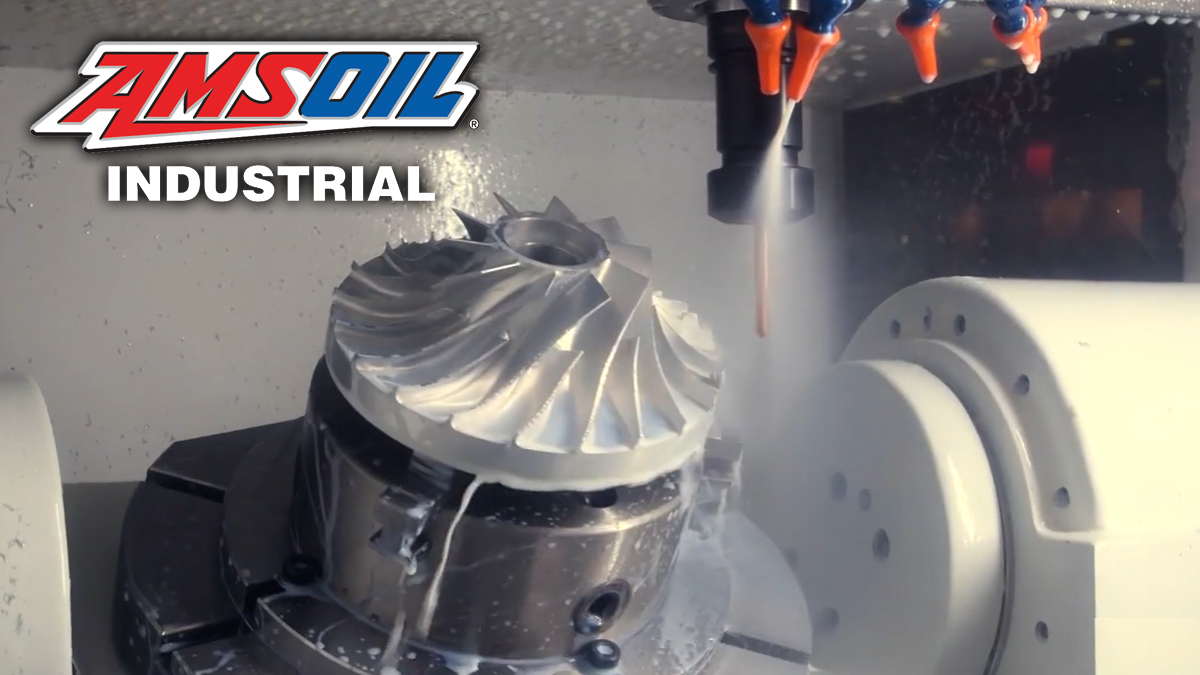Tramp oil contamination can compromise the health of metalworking fluid, causing foaming, microbial growth and costly downtime. In severe cases, it can lead to full fluid replacement, emergency maintenance and lost production hours.
Understanding how tramp oil enters your system and how to manage it is essential for preventing disruption and extending coolant life.
What Is Tramp Oil?
Tramp oil is any unwanted oil that enters a metalworking fluid system from sources other than the intended coolant formulation. It typically comes from:
– Hydraulic fluid leaks
– Way lubricants and machine slide oils
– Gearbox oil seepage
– Atmospheric contamination
Once inside the system, tramp oil forms a layer on the coolant surface. Over time, it can emulsify with the coolant, destabilize the fluid’s chemistry and allow bacteria to thrive — all of which negatively affect your operation.
The Consequences of Tramp Oil Contamination
Despite its seemingly insignificant appearance, tramp oil introduces several challenges to metalworking operations. Unchecked tramp oil contamination can result in:
Foaming: Tramp oil interferes with the coolant’s surface tension and often causes aggressive foaming, especially in high-pressure or high-agitation systems where turbulence amplifies the problem. Excessive foaming can significantly reduce coolant efficiency, disrupt equipment performance, cause spills and lead to avoidable maintenance downtime.
Reduced cooling and lubricating performance: Excessive tramp oil reduces the cooling and lubricating efficiency of your metalworking fluids. When tramp oil builds up, it creates a barrier on the surface of the coolant, reducing its ability to transfer heat effectively. This can lead to overheating, premature wear, increased tool costs and a decline in performance.
Corrosion and staining: Tramp oil negatively affects the pH level of coolant, which, over time, can lead to corrosion of machine components, tools and even finished parts. This not only reduces equipment life but can also lead to staining or damage to the final product, reducing both quality and appearance.
Reduced tool lifespan: Contaminated fluids can cause excessive wear and tear on tools by introducing abrasive particles or harmful substances. This constant exposure leads to faster degradation, reducing tool life and requiring more frequent replacements, which can increase maintenance costs and downtime.
Foul odors and bacterial growth: Oil films create an ideal environment for the growth of harmful bacteria and fungi. These microorganisms thrive in the presence of moisture and nutrients provided by the oil, leading to unpleasant odors and creating potential health risks, such as skin irritations or respiratory issues, if left unchecked.
Poor fluid performance often means more frequent change-outs, higher disposal costs and unnecessary downtime. Addressing these issues promptly ensures cost-saving benefits and smooth operation.
How to Detect Tramp Oil
Early detection helps avoid the worst-case scenarios. Look for:
– A visible oil film or slick on the surface of your coolant
– Persistent foaming during operation
– A drop in coolant pH or clarity
– Strong odors or signs of microbial growth
– Decreased sump life or machine performance
Regular coolant monitoring and operator training are key steps in identifying problems before they escalate.
Effective Management and Removal Techniques
Even well-maintained systems will accumulate some level of tramp oil. Stay ahead of contamination using a proactive, multi-faceted approach that combines the following techniques:
1– Surface and belt skimmers are affordable, easy to install and highly effective at removing tramp oil from fluid surfaces before it emulsifies or circulates through the system. AMSOIL Industrial Skimmers are designed for tough environments and provide continuous removal with minimal oversight.
2– Establish a regular maintenance schedule that includes fluid testing, filtration checks and machine inspections. Consistent attention helps catch contamination early and extends fluid life.
3– Implement best practices, ensuring that all personnel involved in machine operation and fluid maintenance understand the proper way to top off fluids, clean tanks and monitor coolant condition.
4– Every facility is different. AMSOIL Industrial provides customized support from Application Engineers, who can evaluate your systems, recommend the right products and help implement fluid-management best practices.
Benefits of Removing Tramp Oil
Investing in tramp oil management pays dividends. Here’s how it can transform your operations:
– Extended Equipment Life: Cleaner fluids reduce wear on machinery and prolong its service life.
– Reduced Downtime: Minimizing contamination-related failures ensures uninterrupted workflows.
– Improved Fluid Longevity: Regularly purified fluids last longer, lowering replacement costs.
– Enhanced Product Quality: Consistent use of clean fluids results in superior surface finishes and dimensional accuracy.
– Cost-Effective Compliance: Proper tramp oil disposal supports environmental regulations, avoiding fines or sanctions.
By unlocking these benefits, you advance toward more sustainable, efficient and profitable metalworking practices.
Protecting Your Coolant and Your Productivity
Tramp oil contamination is one of the most preventable causes of fluid degradation in metalworking environments. With the right tools and guidance, facilities can dramatically reduce the risk of contamination and avoid unplanned downtime.
Whether you’re setting up a new coolant system or looking to improve the performance of an existing one, AMSOIL Industrial can help. Our skimming solutions and technical support are designed to keep your operation running clean, efficient and trouble-free.
Talk to an Application Engineer today to get started.
Explore our Skimmer Solution →
